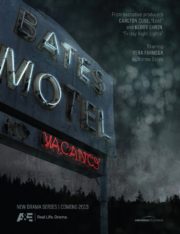“All Work and No Play Makes Jack a Dull Boy”: The Chilling Labyrinth of ‘The Shining’
In Stanley Kubrick’s 1980 masterpiece, “The Shining,” we are escorted through the eerie corridors of both the Overlook Hotel and the human psyche. Adapted from Stephen King’s novel, the film is less a ghost story and more a labyrinthine exploration of madness and the supernatural. The chilling tale follows Jack Torrance (Jack Nicholson) as he becomes the winter caretaker of the isolated Overlook Hotel, accompanied by his wife Wendy (Shelley Duvall) and son Danny (Danny Lloyd), who possesses a psychic ability known as “The Shining.” What begins as an idyllic retreat quickly devolves into a spiral of insanity and terror.
Whispers and Shadows: Crafting the Unspeakable Horror
Atmosphere and Tone
Kubrick’s genius lies in his meticulous approach to atmosphere. Rather than relying on jump scares, “The Shining” builds its horror through a profound sense of unease and dread. The hotel itself is an oversized character, with sprawling, empty spaces that feel claustrophobic due to their sheer emptiness. The Overlook’s history haunts every scene, creating a pervasive tension that escalates with each passing minute.
Cinematography and Visuals
The film’s visuals are carefully constructed to disorient and disturb. Kubrick uses symmetry and one-point perspective to create an unnerving effect, mansion corridors seem to stretch into infinity. The use of Steadicam provides a smooth, ghostlike movement through the hotel’s hallways, further immersing the viewer in the unsettling environment. The stark contrasts in lighting and the strategic use of color particularly Jack’s blood-red jacket or the infamous ‘REDRUM’ scene amplify the atmosphere of dread.
Sound That Echoes in the Silence
“The Shining’s” soundtrack, composed by Wendy Carlos and Rachel Elkind, coupled with dissonant sound effects, forms a soundscape that underpins the film’s palpable sense of horror. The eerie score evokes a primal fear, while periods of silence are masterfully used to significant effect. It is during these quiet moments that the viewer’s anticipation of terror becomes almost unbearable.
The Edge of Madness: A Kaleidoscope of Terror
Performances That Haunt the Halls
The performances in “The Shining” are key to its sense of terror. Jack Nicholson’s portrayal of Jack Torrance’s descent into madness is electrifying — his menacing grin, wild eyes, and volatile unpredictability chill to the core. Shelley Duvall, often criticized for her portrayal of Wendy, is the embodiment of vulnerable terror, offering a stark contrast to Nicholson’s frenzy. Danny Lloyd’s performance is equally compelling, navigating his character’s psychic awareness with a subtlety that belies his age.
The Horrors Unseen and Unspoken
“The Shining” defies easy classification, blending psychological terror with the supernatural. Kubrick doesn’t just depict horror; he makes the audience feel it, utilizing ambiguity and a refusal to provide clear answers as powerful weapons in his arsenal. The film challenges viewers to question reality, leaving them to wonder if the ghosts are real or simply projections of Jack’s fractured mind.
The methods used to trigger fear in “The Shining” are complex, often rooted in the anticipation of violence rather than its explicit depiction. Kubrick understands that what isn’t shown can be as terrifying as what is, employing subtlety and suggestion to haunt the imagination.
Themes That Echo in Eternity
Beneath its surface-level scares, “The Shining” serves as a vehicle for deeper exploration into the human condition, examining themes of isolation, the fragility of the psyche, and the cyclical nature of violence. These thematic currents add layers of complexity to the film and contribute significantly to its enduring status.
Redrum Reflections: Confronting The Shining’s Lasting Dread
The effectiveness of “The Shining” as a horror film cannot be overstated. It is both genuinely frightening and profoundly thought-provoking, with an innovative approach that has influenced countless films within the genre. Kubrick’s meticulous attention to detail ensures every element serves the chilling narrative, making “The Shining” a must-watch for any horror aficionado or even those interested in the study of film.
While some contemporary viewers might find the pacing slower than that of modern horror flicks, those with an appreciation for atmospheric and psychological terror will be mesmerized. Casual viewers should be aware that the film contains graphic content and intense scenes that may be triggering.
When compared to other horror classics, “The Shining” stands out for its masterful construction and timeless ability to unsettle. It shares kinship with films like “Psycho” and “Rosemary’s Baby,” though distinctly Kubrickian in its execution.
Ultimately, “The Shining” has few weaknesses, barring subjective tastes for storytelling speed and clarity. It’s a tour de force of the genre that deserves its iconic status and continues to be debated and dissected by fans and film scholars alike. In the words of the Torrance family, “The Shining” is not just a hotel stay – it’s a chilling stay of the mind.




